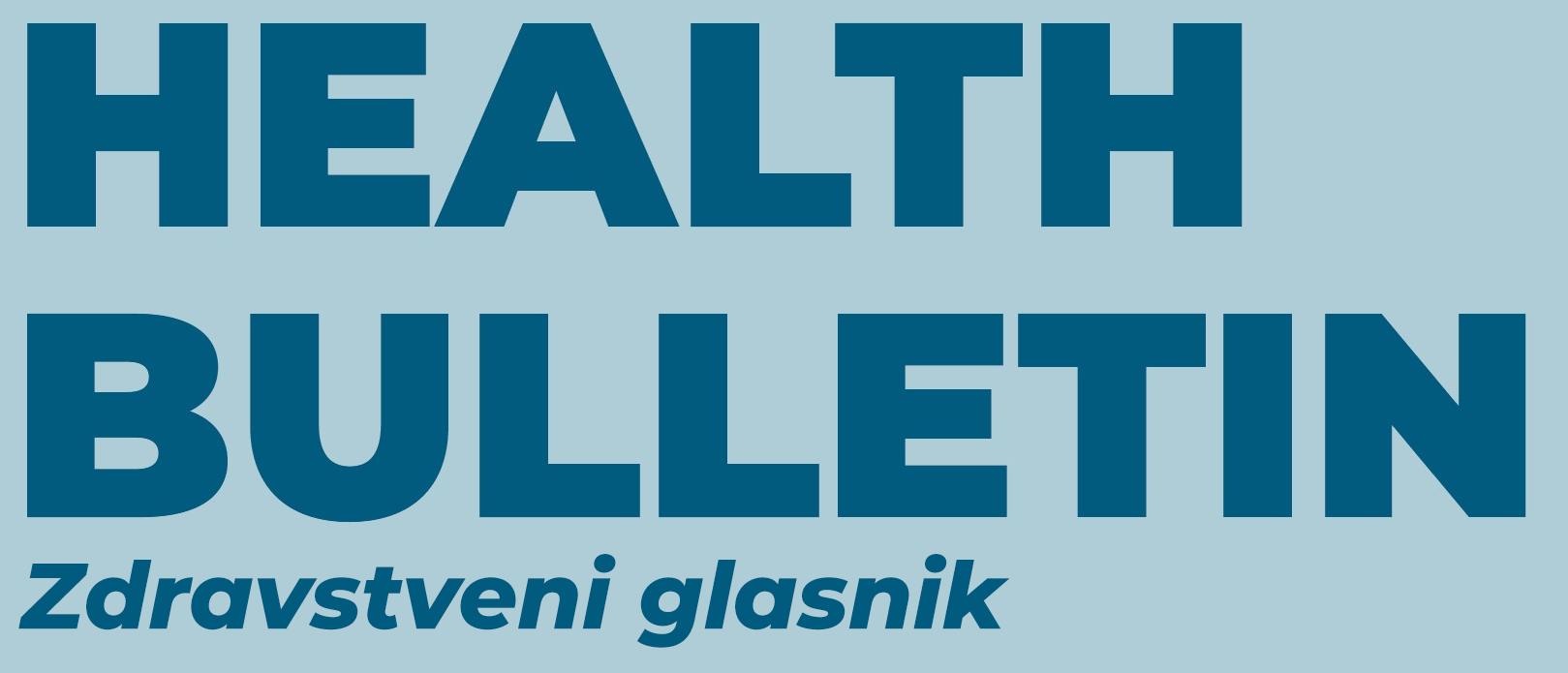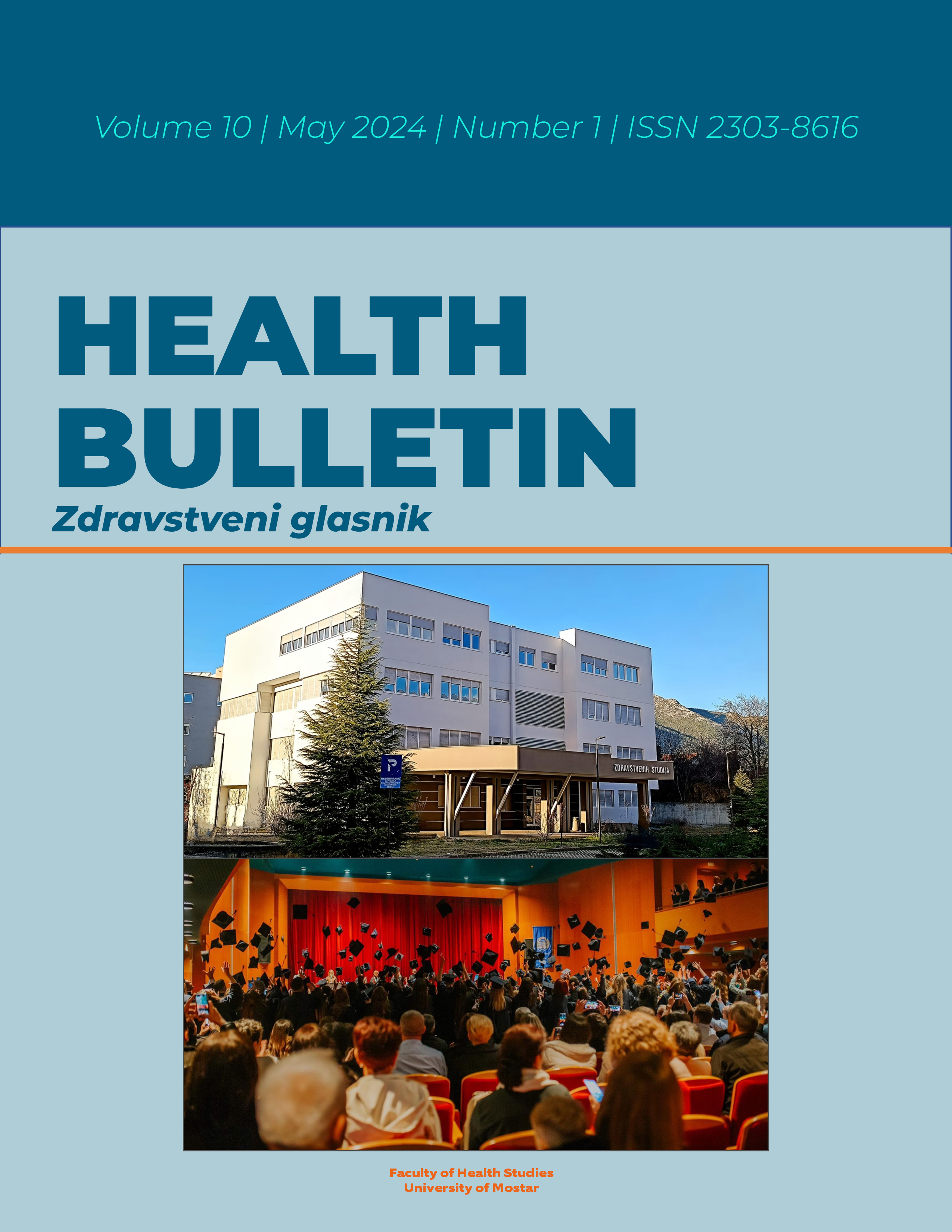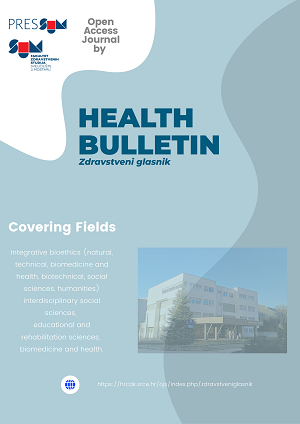CHANGES OF TSH, FT3 AND FT4 LEVELS IN PATIENTS WITH HYPERTHYROIDISM
Keywords:
Thyrotropin, thyroxine, TSH, FT3, FT4, hyperthyroidismAbstract
Introduction: The thyroid hormone secretion disorders may be hyperthyroidism (reduced TSH levels and increased levels of FT3 and FT4) and subclinical hyperthyroidism (decreased concentration of TSH with normal FT3 and FT4).
Aim: To investigate levels of thyroid hormones (TSH, FT3, and FT4) in patients with hyperthyroidism or subclinical hyperthyroidism treated at Tuzla Blue Clinic.
Materials and methods: The study included 120 patients divided into three groups: a control group, groups with respondents who have hyperthyroidism, and a group of patients with subclinical hyperthyroidism. The concentrations of the hormones TSH, FT3, and FT4 were analyzed. The determination was carried out on the device IMMULITE 1 Siemens using the immunochemistry method.
Results: TSH between our group investigated the existence of significant statistical differences between the control group and the group with hyperthyroidism (p<0.0001) and between the control group and the group with subclinical hyperthyroidism (p=0.0001), and the parameter FT3 showed that a statistically significant difference exists between the control group and the group with hyperthyroidism (p<0.0001), and between patients with hyperthyroidism and subclinical hyperthyroidism (p<0.0001). For FT4, we found a statistically significant difference between the control group and the group with hyperthyroidism (p<0.0001) and between groups with hyperthyroidism and subclinical hyperthyroidism (p <0.0001).
Conclusions: The concentration of TSH is reduced in both hyperthyroidism and subclinical hyperthyroidism. The serum concentrations of FT3 and FT4 are elevated in hyperthyroidism, while in subclinical hyperthyroidism, the serum concentrations of FT3 and FT4 stand in the reference area.
















